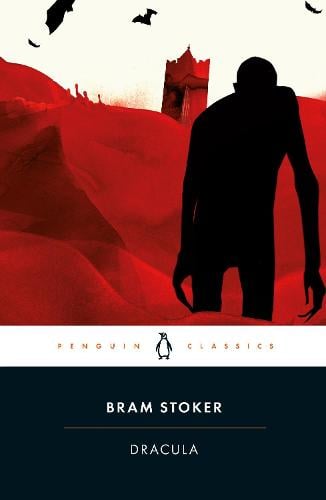Disclaimer: If you should make a purchase through links in this blog, I may earn a commission from the sellers, however that does not effect the cost to the consumer and has no influence over the content of this blog.
Bram Stoker drew upon a visit to Whitby in 1890, stories told to him by Ármin Vámbéry, a Hungarian-Jewish writer, about the Carpathian mountains, and the mythology of vampires when he wrote his most famous novel, Dracula. However, he didn't depend purely on inspiration, and he spent several years researching locations, and the mythology of the vampire, making plenty of notes, before he began to write the novel proper.
What he created has endured, and Stoker gave the world one of its most well known monsters.
The structure of the novel is epistolary, made up of diary entries, newspaper cuttings, and notes made by the characters. In Stoker's work as newspaper writer, he would have been well acquainted with the practice of collecting together snippets of sources like this and collating them.
In this way, the world we are drawn into is always seen through the eyes of the characters within it. And so, we see the monster, Count Dracula, the King of Vampires, through the eyes of the characters too. We experience their fears, their apprehensions, anxieties, and hesitant hopes. In this way, that famous vampire is always shrouded in the fear and uneasiness the characters' feel because of him, so feeding the tension of the narrative. More so than if the novel had just been a straightforward telling from third person perspective.
The novel has inspired analysis regarding sex and sexuality. From the three female vampires in Dracula's castle, seductively trying to draw their intended victims unto them, and the slight homoerotic tones in Dracula's hold over the character of Jonathan Harker ("he has a fearful hold upon me"). These have, in part at least, been inspired by analyses of Stoker's own sexuality (he appears to have endured a passionless/sexless marriage, and he was associated with other gay figures from the Victorian literary world, such as Oscar Wilde, and a great admirer of Walt Whitman).
On reading Dracula, the reader does notice that Stoker seemed to have had a preoccupation with what the role of men and women ought to be, how the gender roles ought to be played. There is much talk of admirable and good "brave men", and the character of Mina, Jonathan Harker's fiancé, is spoken of admiringly by the male characters in the novel for her support of their cause. It might not be too much of a stretch to draw the conclusion that Stoker, in his writing about sex and gender roles, was trying to exorcise some of his personal preoccupations and fears.
Dracula has also deals with the theme of illness, and the spread of disease. Again, something of which Stoker was personally acquainted, having been bedridden in his childhood with an unknown illness. Indeed, throughout the novel the reader finds imagery of sickness and descriptions of characters, such as Lucy Westenra, having to take to their beds with feelings of sickness.
Dracula's taking of blood, and offering his blood to victims, his control of animals like bats and rats, thought dirty and carriers of disease, also suggest the writer's exploring the theme of disease, and how disease is spread. Dracula is even able to spread his condition of vampirism to other character's in the novel.
The character of a Dracula has since become a pop culture icon that can be found in comic books, cartoons, films, and even advertisements. But, Stoker's creation, the character that inspired them all, is a more complex monster than many of these two-dimensional renderings would have you believe.
This King of Vampires is centuries old and was once a military leader. However, by the time that we meet Dracula at the beginning of the novel we find that this is but a memory, though he is proud of his warrior past. We also learn that Dracula is very intelligent, and he is proud of his high ranking ancestry.
As an "Undead", and a scholar of black arts, Dracula possesses great strength and supernatural abilities. He is capable of changing form, controlling animals, and his appearance seems to change throughout the novel, especially as relates to his apparent age. He is also, however, bound by certain laws, some perhaps well known to you, like his aversion to daylight and garlic.
The plot of the novel stems from the Count's desire to move from his castle in Transylvania to London, England. To do so, he employs the solicitor, Jonathan Harker, which is where the story begins . . .
If you would like to purchase a copy of Dracula by Bram Stoker, you can do so here. Bookshop.org supports independent bookshops, and offsets carbon emissions from every delivery.
If you found this piece interesting or enjoyable, or hopefully both, please do consider following/supporting me over at ko-fi. Ko-fi is a platform for creatives and is a great way for them to keep in touch with their fans/supporters. All support is gratefully received and very much appreciated!
Thank you for reading, stay well, and see you soon!


No comments:
Post a Comment